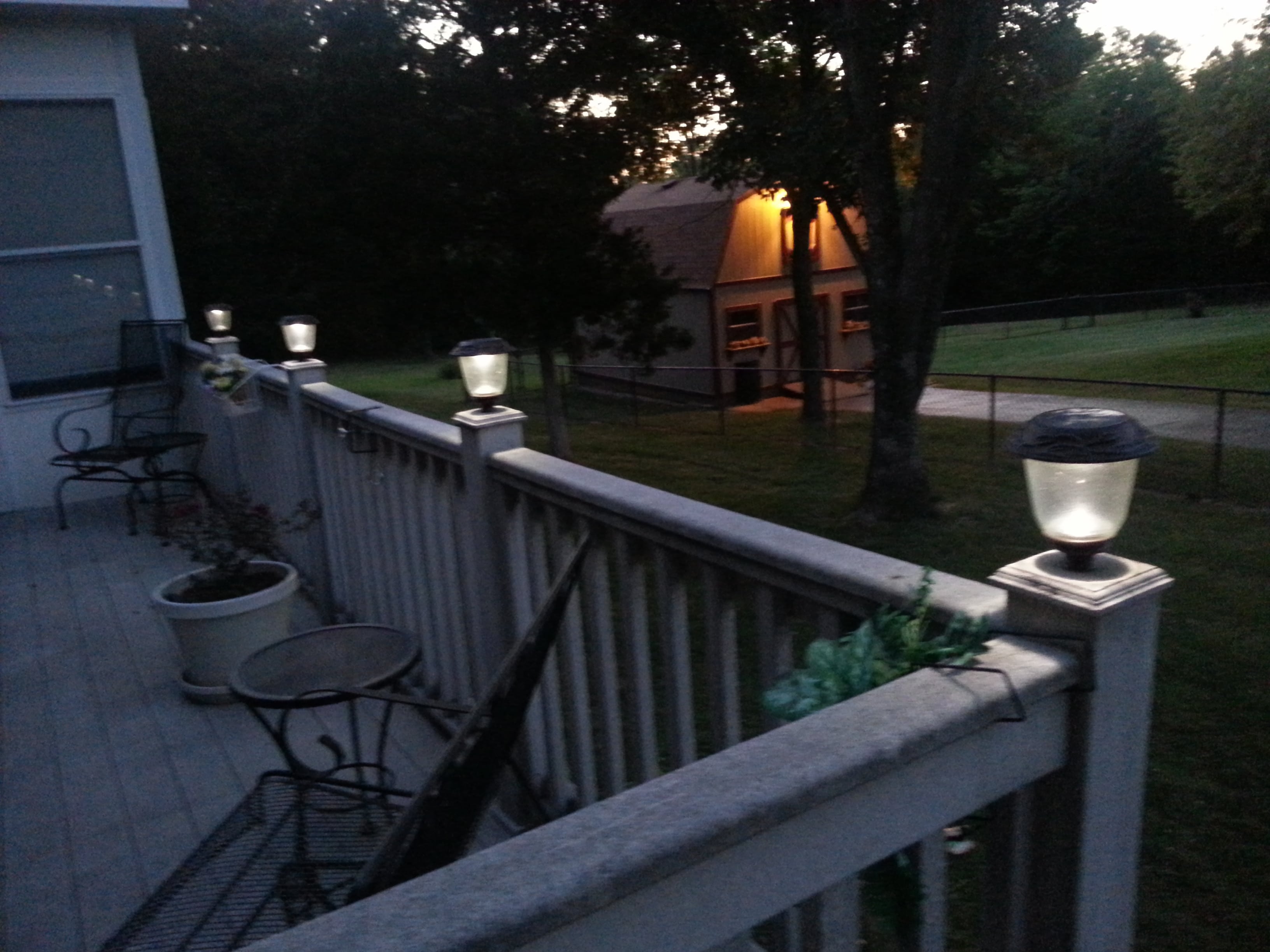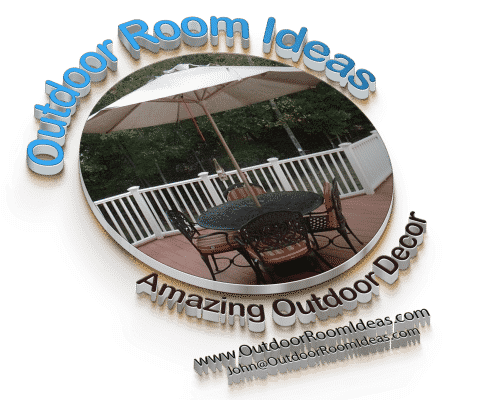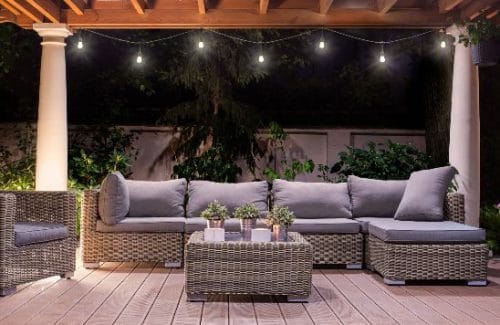Let us look at some of my ideas on patio lighting maintenance. What we're talking about here isn't just about keeping your outdoor space lit; it's also about creating an ambiance that's welcoming and efficient. Whether you're cozying up with a good book on a summer evening or hosting a backyard barbecue, your patio lights play a crucial role.
You're going to find out about the main players in the outdoor lighting game: low voltage, line voltage, and solar lights. Each type has its quirks, but they all need some TLC to keep the glow going. Regular maintenance, believe it or not, can mean the difference between a dimly lit disappointment and a brilliantly luminous leisure space.
This isn't just about swapping out a bulb here and there. It's a commitment to bi-annual check-ups that will keep your outdoor lighting not just functional, but exceptional. Think of it as a wellness routine for your lights—preventative care to avoid the common pitfalls of outdoor lighting woes.
Now, before we get into the nuts and bolts of bulbs and batteries in the next section, keep in mind that a well-maintained light is a happy light. And a happy light means a more beautiful and secure home. So, that said, let's ensure those lights don't flicker out on your next outdoor get-together.
Bulb Basics: Ensuring Long-lasting Brightness
I'm here to help you understand how to keep your patio lights glowing efficiently. Choosing the right type of bulb for your outdoor area can be a game-changer. You're going to find out about low voltage, line voltage, and solar LED options, and it's important to know which suits your space the best.
In my opinion, knowing your bulb base sizes and wattage is crucial. For low-voltage lighting, which typically operates at 12 to 24 volts, you want to pick bulbs that match the base size and wattage recommended by the manufacturer. They often offer dimmable options, allowing for adjustable ambiance in your outdoor seating areas.
Now, what happens if you keep losing bulbs? They may be getting too hot. It's essential to ensure your bulbs aren't exceeding their optimal temperature – especially in enclosed fixtures that could trap heat. This isn't just about bulb longevity; it's also about safety.
When it comes to line voltage lighting, typically running at 120 volts, pay special attention to the design and wattage of your bulbs. Dimmable options here are perfect for creating a great outdoor atmosphere, but choose the right dimmer switch to match. My advice? Go for a light that resonates with you but also adheres to the specifications for safe operation.
The Heart of Solar Lights: Maintaining Batteries and Panels
You might already know that solar lights practically take care of themselves. But even though they seem low-maintenance, there's a bit more to it if you want them to function at their best. I'm going to help you understand the ins and outs of keeping your solar lighting system, particularly the batteries and panels, in top shape.
In my opinion, the first thing you should look at is the batteries. Choosing the right solar batteries can be a game-changer. Typically, solar light batteries will last from 3-5 years, but that's only if you treat them right. You need to compare your old battery before you purchase new ones – voltage and size are key. A mismatch can mean dim lights or no lights at all.
When it's time to switch out the batteries, don't worry too much about it. This process is usually straightforward, but you do want to ensure that you choose something that resonates with your specific lighting setup. This means checking that the voltage and dimensions are appropriate, so your efforts pay off with a bright, reliable glow.
Now, let's talk about solar panels. They need to be clean to get the most out of your daily charge. I'm here to tell you that cleaning solar panels isn't just about aesthetics, it's also about efficiency. A clean panel without leaves or dirt can absorb sunlight much better. If you're not sure how to clean them, use a soft cloth and soapy water – avoid abrasive materials that can scratch the panels.
In case you're marking your calendar, aim to schedule maintenance at least two times a year. This will include cleaning those panels and checking the state of your batteries. Consistency is key, so pick dates that are easy to remember — like when you set the clocks forward or back for daylight saving time.
By the end of section 4, you're going to find out about the final pieces of the maintenance puzzle: inspecting the wiring and keeping lenses clear. And guess what? They are the icing on the cake to ensure your lights are dazzling throughout the year.
Comprehensive Care for Your Patio Lighting System

So, you're looking to keep your evenings alight and your outdoor space inviting. A well-maintained patio lighting system not only ensures that your backyard stays beautifully illuminated but also adds to the safety and security of your home. Let's walk through some essential steps to wrap this up.
First things first, you're going to want to mark your calendar for bi-annual maintenance sessions. Consistency is key in preventing problems before they start, and twice a year is a sweet spot for most climates and setups. During these check-ups, you're going to clean off any debris or dirt that's gathered on your lighting fixtures. A simple wipe-down can often make a big difference.
Next, take the time to carefully examine the wires, especially if they run underground or are exposed to the elements. Weather and yard activities can cause wear and tear, so being proactive can save you from bigger issues down the road. Cable breaks or corrosion can not only affect the performance of your lights but can also pose a safety hazard.
You also can't overlook the lenses of your lights. Clean lenses are critically important to ensure that the full brightness and reach of your lights are not hindered. Plus, it maintains the aesthetic appeal of your space. You'll be surprised at how much brighter your patio will appear with just a bit of cleaning.
In my opinion, while maintenance is essential, make sure you're also taking this opportunity to assess whether any upgrades or replacements are needed. Lighting technology continues to advance and making the switch to more efficient options can both enhance your space and reduce your energy consumption.
Just don't focus too much on perfection; your first attempt at maintenance doesn't need to be flawless. But by following these practical tips, I'm confident that you're going to see a notable difference.

